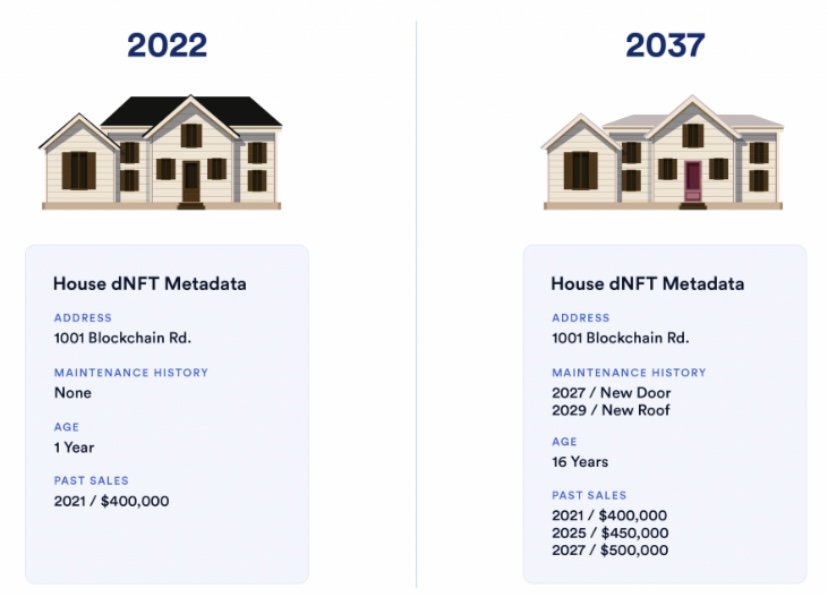NFT Gallery
This Gallery & NFT’s are for now not meant for sale. Sorry…
I’m just experimenting with this new ERC Token Standard Technology, Smart Contracts, Bridges, EWM’s, ENS Domains, Zero Knock-ledge Proof, web3, etc.
Question: Can this new technology have the potential to fundamentally change many aspects of our future? 🤔 🧐
NFTs will reshape the internet as we know it, with property rights baked into its code! 🤯 🤩
Think about tickets 🎟 (airline, bus, train, concerts, festivals, etc…) as NFT’s…
Think about corporations loyalty programs 😘 for their customers (exclusive merch & access to events) as NFT’s…
Think of certificates of authenticity 🔒 as NFT’s for major brands that are suffering from counterfeiting products 👺 🤡 ☠️ 😈
Think of tokenisation of real estate 🏠 🏢 🏬 as NFT’s…
Think of diplomas, degrees, other important document’s 📜 of schools, universities 🏫, governmental entities 🏤 🏥 🏛 as NFT’s…
Think how musicians could profit directly from their music / album creation…
Think outside the box 📦
This new technology is still in baby shoes 👼🏻, NFT will be more than just static .jpegs, .gifs, .mp4, etc. on a blockchain 😒
Dynamic NFTs provide a canvas for real-world utility. A few dynamic NFT (dNFT) use cases:
The next step in the evolution of NFTs is just getting started.
A dynamic NFT is an NFT that can change based on external conditions.
Changes to the NFT metadata are encoded in the smart contract that updates when predefined conditions are met.
NFTs can be programmed in an infinite number of ways. For example, your Tesla Model 3 from can be tokenized as a dNFT with metadata updated to reflect its service records, mileage, accident report, market value, and more.
The metadata of a dNFT representing your house can change to reflect maintenance history, past sales, and age.
Food for thoughts regarding this new technology beneath 🧐 🤔


🎊 🎁 50 Years anniversary of FIAT 🎂 🎉

🚶🏼♀️ Come walk with me 🚶🏻

🌊 On the Edge 🌊

🎣 Fishing @ dawn 🎣

🏢 🏛 Central Banks 🏛 🏢

🌅 Nature is the art of God 🌅

👾 Digital girl 👾

🌇 City life 🌇

🔥 Colosseum’s chill 🔥

☀️ Morning in paradise ☀️

⏳ Window of time ⏳

🌅 Sunrise @ the blue lagoon 🌅

🔥 Smoking hot 🔥

❄️ Cold path ❄️

Food for thoughts 🧐 🤔
NFTs are not a scam. NFTs are not a fad.
In fact, NFTs are the building blocks of the internet of the future. But in order for us to see this future clearly, we first need to go back into the past.
The year is 1992. The World Wide Web is only three years old. For the first time in human history, we share a global commons, where, irrespective of where we are in the physical world, we can convene & share information freely.
Most people at that time couldn't see what it meant to be connected by a network of computers. In fact, many people thought the internet itself was a scam or a fad.
But a few early internet pioneers saw the potential in this burgeoning technology.
One of those early internet pioneers, John Perry Barlow, saw both the opportunities & pitfalls inherent in our new digital world.
&, of early cyberspace, he posed a prescient riddle all the way back in 1992, that I'll paraphrase for you:
"If our property can be infinitely reproduced & instantaneously distributed across the planet without cost, how are we going to protect it?
How are we going to get paid for the work we do with our minds?
& if we can't get paid, what will assure the continued creation & distribution of such work?”
A lot has changed on the internet since 1992. The internet itself is an alive & evolving technology. & as predicted by its earliest champions, the internet has increasingly become our default context.
Today, one's job, wealth, relationships, sense of self, are all often more mediated through our digital contexts than our physical ones.
Yet, Barlow's riddle has remained vexingly unsolved. Concepts like property & ownership -- ideas that have been with us for centuries in the physical world --
have evaded us in our digital spaces.
We’ve tried to foist copyright, DMCA, DRM & watermarks onto the internet to protect our ideas & to restrain their distribution.
None of these approaches have worked.
Why?
Because, as Stewart Brand, another early internet pioneer, famously coined:
Information wants to be free
It wants to travel effortlessly, without hindrance, without encumbrance. This is what allowed the internet to succeed in the first place.
Since 1992, we've uploaded trillions of photos & videos & even cat memes to the internet for free.
& what business model has allowed this information to be free?
Advertising.
Advertising is the internet's default business model, not because that's what we want, but because it's what pays the bills.
Right now, the few large corporations that run the most effective ad networks control most of the value on today's internet, not the people creating its content.
On today's internet, we don't get paid for the work we do with our minds. & what's more, the content we upload to these services is trapped there.
These services not only make money from our content, they control it.
Until NFTs.
NFTs are a technological breakthrough. They offer us the opportunity to break away from that broken system.
So you're asking yourself: What is an NFT?
It's a certificate of ownership registered on the blockchain for everyone to see. It's not too dissimilar to the deed you get when you buy a house in the physical world.
But instead of a house, an NFT denotes ownership of a file on the internet. & unlike copyright or watermarks, which are ancient technologies rooted in bygone eras, NFTs are internet native.
They are born of the internet for the internet. & NFTs don't simply port our existing model of ownership from the physical world, they improve it.
In the physical world, ownership actually fences people out. It precludes others from enjoying what you own. I wouldn't expect to feel welcome in your home uninvited.
Digital space, however, is expansive. It's home to the infinite, the exponential, the instantaneous. NFTs offer a system of ownership that reflects this expansiveness.
With NFTs, me owning something doesn't preclude others from enjoying it. In fact, it's the opposite. The more an NFT is seen, appreciated & understood, the more possibility it has to increase in value.
Let's take an example:
Nyan Cat, a wildly popular, instantly recognisable cat meme.
Since it was uploaded to the internet a decade ago, it has accumulated hundreds of millions of views.
& precisely because of that virality, when it was auctioned as an NFT, it sold for 300 ETH, or the equivalent of over 600,000 dollars.
& the person who now owns this NFT, they're not preventing anyone from liking, resharing or remixing Nyan Cat -- Nyan Cat is free to travel the internet as it always has.
What's different now is that, as Nyan Cat's popularity continues to grow, so can the value of the NFT.
Because of NFTs, Chris Torres, Nyan Cat's creator, has received direct compensation for his creation. But what's more is he'll continue to receive compensation every single time the NFT is resold.
This is because of the royalty system baked into the smart contracts that govern NFTs.
NFTs are software; they can be programmed.
& with something as complicated as royalties, which require enormous amounts of legal & manual labor to implement in our analog world, we can now express them in a few simple lines of code.
This represents a breakthrough innovation for any industry predicated on royalty payments, such as publishing or music. & just as blogs & MP3s re-architected, these industries in decades past, NFTs will catalyse their next evolution.
The internet dissolved our geographic boundaries. NFTs dissolve economic boundaries. Yatreda, an Ethiopian artist collective, created beautiful portraits of heroes & heroines from Ethiopia's past.
They sold them as NFTs, & in one weekend, they made 13 ETH, or the equivalent of over 40,000 dollars. & they were paid out instantly.
No customs, no foreign exchange, no international wire transfers. An artist collective based out of Addis Ababa has the same economic tools at their disposal now as an artist in LA, New York or London.
& while the NFTs for Nyan Cat & Yatreda were created & sold on the same platform, they're not confined there -- remember:
Information wants to be free.
& unlike the current internet, where information is made available through proprietary apps & platforms, NFTs are portable. Instead of living on a company's private servers, they live on decentralised infrastructure that is peer to peer, open & transparent.
But understanding this complex decentralised infrastructure is not a prerequisite to understand what NFTs unlock for the human experience.
Once digital value & ownership are no longer the sole domain of a few corporations, radical new possibilities emerge. In other words, 30 years later, NFTs finally solved John Perry Barlow's riddle.
& this isn't science fiction; the technology already works. NFTs are already being used by the next generation of internet pioneers & in the coming decade, NFTs will reshape the internet as we know it, with:
property rights baked into its code.
So what does the internet of the future look like with NFTs as its building blocks?
An internet where economic control rests in the hands of creators, not platforms.
An internet where our ideas & creativity can be directly supported.
An internet where information can be free, but where we get paid for the work we do with our minds.

